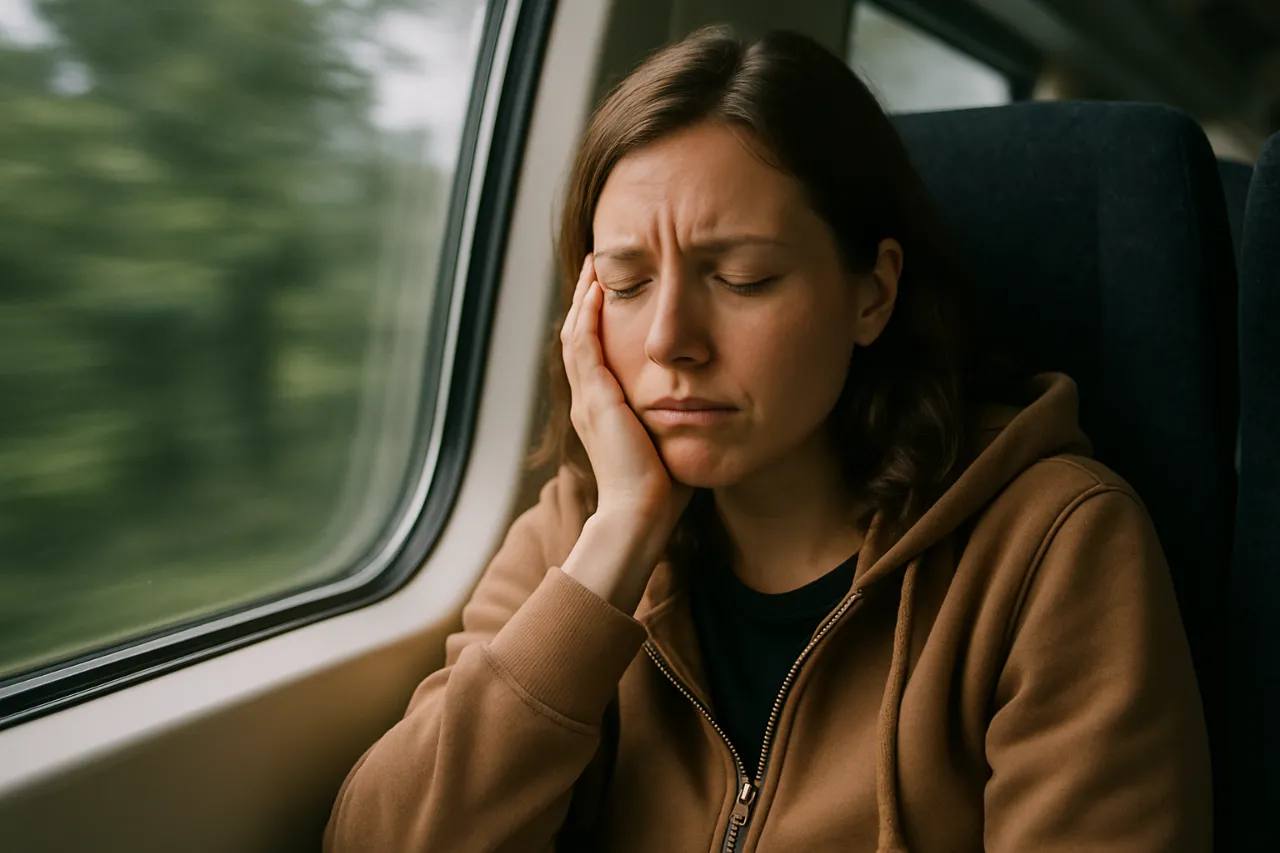Why Does Motion Sickness Happen? The Science Behind Your Nausea

What Is Motion Sickness?
Imagine this: you're on a road trip, winding through scenic hills, but instead of enjoying the view, you're battling a wave of nausea, dizziness, and cold sweats. Or perhaps you're on a cruise, but the gentle rocking of the ship leaves you feeling unsteady and sick. This is motion sickness, a common yet frustrating condition that can turn exciting travel experiences into uncomfortable ordeals.
Motion sickness, also known as travel sickness, affects millions of people worldwide, from car passengers to boaters and frequent flyers. It's not just a minor inconvenience—it can disrupt vacations, work trips, and even daily commutes. Understanding its causes can help you take control and enjoy your journeys without the discomfort.
The Science Behind Motion Sickness
Motion sickness occurs when your brain receives conflicting signals from your body's sensory systems. To understand this, let's break down the key players:
Vestibular System
Located in your inner ear, this system senses motion, balance, and spatial orientation. It's like your body's built-in gyroscope.
Visual System
Your eyes tell your brain whether you're moving by observing your surroundings, confirming motion through visual cues.
Proprioceptive System
Your muscles and joints provide feedback about your body's position and movement, helping your brain make sense of what's happening.
When these systems send mismatched signals, your brain gets confused. For instance, when you're reading a book in a moving car, your eyes are fixed on the stationary page, but your vestibular system senses the car's motion. This sensory conflict can trick your brain into thinking you're poisoned—since poisoning can also cause sensory confusion—triggering nausea, dizziness, and even vomiting as a protective response.
The Vestibular-Visual Conflict
This phenomenon is at the heart of motion sickness. It's why motion sickness is common in situations where motion is felt but not seen, like on a boat (sea sickness), in a car (car sickness), or during turbulent flights (airsickness).
Recent research, including a groundbreaking study from Japanese scientists in April 2025, has deepened our understanding of this process. The study found that stabilizing the vestibular system with gentle stimulation can reduce these conflicting signals, helping the brain regain balance and alleviate symptoms.
Why Some People Are More Affected
Not everyone experiences motion sickness to the same degree. Several factors influence susceptibility:
Gender Differences
Women are up to five times more likely to experience motion sickness, possibly due to hormonal differences affecting the vestibular system. This makes motion sickness a significant concern for female travelers.
Age Factors
Children aged 2–12 are highly susceptible, as their sensory systems are still developing. Adults tend to experience it less as they age, though sensitivity varies.
Genetic Predisposition
Some people inherit a more sensitive vestibular system, making them prone to dizziness and nausea during motion.
Environmental Triggers
Activities like reading, using a phone, or sitting in the back seat of a car can worsen symptoms by increasing the sensory mismatch.
Practical Tips to Manage Motion Sickness
While motion sickness can be challenging, there are several evidence-based strategies to reduce its impact. Here are some practical tips to help you stay comfortable on the go:
Visual Strategies
- • Focus on the horizon
- • Look out the front window
- • Avoid reading or screen time
Positioning Tips
- • Sit in the front of vehicles
- • Choose middle seats on boats
- • Sit over wings on planes
Lifestyle Factors
- • Eat light, non-greasy meals
- • Stay hydrated
- • Get adequate rest
Breathing Techniques
- • Practice controlled breathing
- • Inhale for 4 seconds
- • Hold for 4, exhale for 4
Innovative Solutions for Motion Sickness Relief
Traditional remedies like ginger, acupressure wristbands, and medications (e.g., Dramamine) have long been used to combat motion sickness, but they come with limitations. Medications can cause drowsiness, and natural remedies may not work fast enough for severe cases. Enter a new wave of solutions: app-based technologies that leverage the latest scientific insights.
Sound Therapy Innovation
Apps like Dizzout use cutting-edge sound therapy to gently stimulate the inner ear through headphones, helping to align sensory signals and reduce nausea in as little as 60–90 seconds.
This approach, inspired by recent Japanese research, targets the hair cells in the semicircular canals and otolith organs via bone conduction, creating a rhythmic background that soothes the brain's sensory conflict.
Such technologies are particularly appealing for travelers seeking non-medicinal options. They're easy to use—just pop on your headphones and press a button—and can be used before or during travel to prevent or alleviate symptoms. These solutions are also multilingual, making them accessible to global travelers in languages like English, Spanish, Korean, Japanese, and Russian.
Conclusion: Take Control of Your Travel Experience
Motion sickness doesn't have to ruin your adventures. By understanding the science behind the vestibular-visual conflict, you can take proactive steps to manage it. Simple strategies like focusing on the horizon, choosing the right seat, and staying hydrated can make a big difference. For those seeking a modern approach, innovative tools like Dizzout offer a drug-free way to stabilize your inner ear and enjoy nausea-free travel.
Ready to Explore Without Worry?
Try incorporating these tips into your next trip, and consider checking out apps like Dizzout for a quick, science-backed solution.
Have you experienced motion sickness? Share your tips or try the #DizzoutChallenge on X to join the conversation about nausea-free travel!